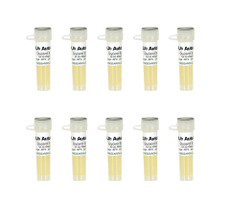CAT#:
11-728
Zymo Research
Mix & Go! XJb Autolysis Competent Cells
1ml 500x L-Arabinose, 10 x 100µl/Unit
Frequently Asked Questions
Are the Mix & Go! strains dam+ and dcm+?
Most cloning strains will be dam+/dcm+ unless specifically noted in the genotype.
Can glucose be added to the growth media?
When glucose is added to the growth media, it inhibits the induction of the autolysis genes when it is present in the media. As the cells grow, they consume the glucose as a carbon source. Once the glucose has been consumed autolysis begins.
Can glycerol be present during the freeze-thaw cycle?
Do not perform the freeze and thaw cycle in a buffer containing glycerol. Glycerol protects the E.coli from forming ice crystals which are essential to the lysis of the cells.
How do you improve lysis efficiency?
If the results obtained are not satisfactory, lysis can be significantly improved by incubating the cells at higher temperatures (25 - 37°C) or for longer time (10 or 20 minutes) after thawing (step 5).
Do heat shock and outgrowth steps have to be performed when transforming XJb Autolysis E. coli?
It is necessary for high transformation efficiencies. However, if your experiment does not require very high transformation efficiency (e.g. when using plasmid stock to transform E. coli), incubate the DNA and cells on ice for 1-5 minutes and spread directly onto prewarmed plates
Are competent cells GMOs?
All our competent cells are classified into Biosafety level 1 and are not genetic modified organisms. Only when transformed with a plasmid they become GMOs.



